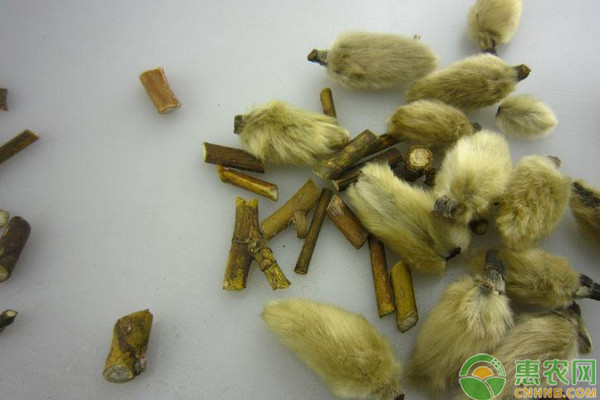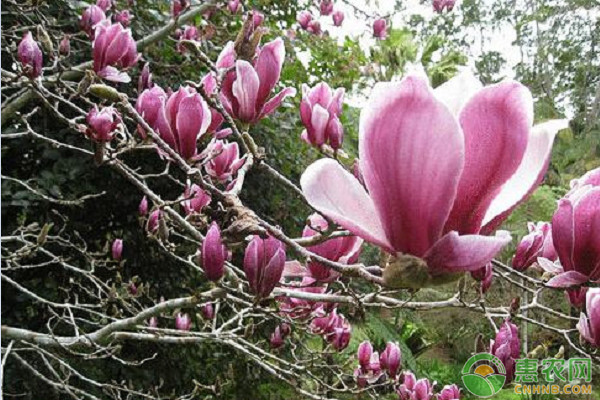Key points of standardized cultivation management techniques of Xinyi
How is Xinyi planted? It may be said that everyone who first thinks of Xinyi is Xinyihua. In fact, Xinyi is also a commonly used Chinese herbal medicine. It can cure cold, sinusitis, toothache and headache. The standardized cultivation techniques are now introduced as follows.

1 plant form
Magnolia is a small deciduous tree with single leaves alternate, leaves elliptic-ovate, apex acute or acuminate, with short stalk. Flowers and leaves are open at the same time or open first, solitary branches. The fruit is oblong, sometimes slightly curved and pale brown.
2 growth habits
Xinyi's warm and sunny environment. Slightly cold-resistant. It grows well in well-drained, loose and fertile sandy soil blocks. Low-lying land, saline-alkali land, and clay land are not suitable for planting.
3 Land preparation and land preparation
The nursery site should choose a land with fertile soil, flat terrain and good drainage. After selecting the planting plot, deep ploughing and deep turning should be carried out with a depth of 25~30cm. When the soil is ploughed, the fully decomposed and mashed farmyard manure is applied per mu (667 square meters/mu, the same below). 500~3 500kg, evenly into the soil as a base fertilizer. After the farmyard manure is applied, the planting land is leveled and finely smashed, and then the sorghum is made into a sorghum. The width of the sorghum is 1.3m, leaving a 40cm wide trench, and the drainage ditch is dug around the land to facilitate timely Eliminate stagnant water to prevent internal bleeding. Planting plots can be planted in the courtyard, in front of the house, or planted in a gentle slope on the sunny side.

4 planting
In April, before sowing, soak the seeds in warm water with grass ash for 3 days, remove the wax, then soak them in warm water for 1 day, remove the seeds, cover the insulation materials such as straw, and germination in the environment of 25 °C. And often watering, when the seeds appear "split mouth" can be sown. When sowing, the ridge surface will be flattened again, and the seeding ditch will be opened according to the specification of the groove depth of 2.5~3cm and the row spacing of 20~25cm. Then the seed that has been germinated is planted into the seeding ditch, and the fine soil is covered after sowing. The thickness of the cover soil should be 2~3cm, and then cover the hay to keep warm. After the emergence of the seedlings, choose sunny days or cloudy days, remove the cover grass covering the seeding line, and strengthen the field management. Cultivate for 1~2 years, when the seedling height is 80~100cm, it can be transplanted.
Transplanting is carried out after autumn or before germination in early spring. At the time of transplanting, the plants were drilled at a distance of 1.8 m and a row spacing of 2.5 m, and 1 plant was planted at each hole. Then cover the soil with compaction, watering, and then cover the soil.
5 Field management
On the seedbed, when the seedlings grow 2 true leaf time seedlings, when 3~4 true leaves grow, the seedlings are fixed at a distance of 18cm. After transplanting, weeding and weeding once a year in spring, summer and autumn. From March to April, the ditch was opened next to the plant, and 25 kg of superphosphate and 2000 kg of manure and manure were applied per acre. During the germination and sowing period, 10~15kg of decomposed manure is applied to each ditch to promote the growth of branches and leaves. After picking the heart in summer, each plant is applied with 10 kg of composted manure to promote multiple flowering branches. In winter, 15 kg of decomposed manure is applied to each ditch.
In the second year after transplanting, the stem is fixed at a height of 1~1.5m. After topping, it is divided into tillers. According to the growth potential and the distribution of branches, it is trimmed into a natural happy-shaped and high-yielding tree. Winter pruning is mainly based on thinning, supplemented by short cuts. Topdressing 1 time after each trimming.

6 pest control
6.1 Moth
The larvae feed on the mesophyll, causing holes or nicks. Control method: kill with 90% trichlorfon crystal 1000 times solution.
6.2 Moth
The larvae feed on the mesophyll, causing holes and nicks. Control method: kill with a spore content of 10 billion / gram of blue worm powder 300 ~ 500 times spray.
6.3 Locust
Absorb young leaves and tender sap. Control method: spray with 40% omethoate 1000 times solution.
7 harvesting processing
Flowering starts 5 to 7 years after transplanting. At the time of picking, the unopened flower buds were collected and the pedicels were taken together. After the flower buds are recovered, the impurities are removed, and when they are dried to a semi-dry state, they are taken back for 1 to 2 days to make them sweat, and then dried until they are completely dry. The quality is better for the body, the flower buds are complete, the inner petals are tight, and the aroma is strong.
For the wonderful pictures and popular comments on the cultivation techniques of Xinyi, you may be interested in the following recommended contents. Welcome to read.
Half Shell Mussel,Frozen Cooked Half Shell Mussel,Seafood Frozen Half Shell Mussel,Frozen Half Shell Mussel
Shengsi Xiangyuan Aquatic Products Co.,Ltd., , https://www.mytilus-edulis.com